Indistylemen
Letter & Card Writing Etiquette for Gentlemen
- Get link
- X
- Other Apps
With the arrival and growth of email over recent decades, there is still something to be said for penning formal letters and cards, which are the written equivalent of classic menswear–that is, an antidote to the fleeting fashion of the day. Here’s our guide to proper etiquette when putting pen to paper.
In our current digital age, past communication practices, like sending a fax or a message via snail mail, have fallen by the wayside. And since the advent of mobile phones and text messaging, the need for formality in written communication has also languished. Still, in an age where “Thx” and “TL:DR” dominate communications, we believe that taking the time to hand-write a missive will make its recipient appreciate it all the more.
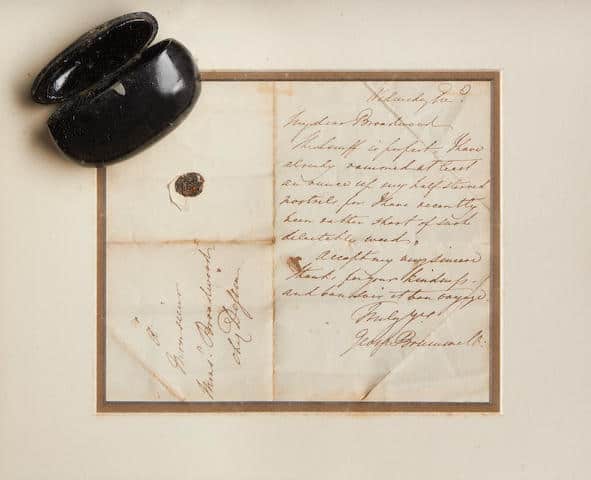
A letter written by Beau Brummell, auctioned by Bonhams
When to Write a Letter or Send a Card
The purpose of writing a hard-copy letter nowadays is most often personal, and mainly to express one’s sentiments. Sending a physical letter or card to someone adds a level of humanity to the communication, enhancing the emotional value of the message; whether it be a thank-you, congratulations, a get-well wish, or an expression of sympathy for a loss.
Letters or cards can also be sent to business clients or colleagues, though the personal connection would still be the main motive. For most standard business communication, from job application letters to notices and requests, a formal letter format might be used, but the document will be sent in the form of an email. This article will concentrate mainly on the etiquette surrounding a personal message written on paper and delivered via mail, though some of the advice can be translated to letter formatting in any medium.
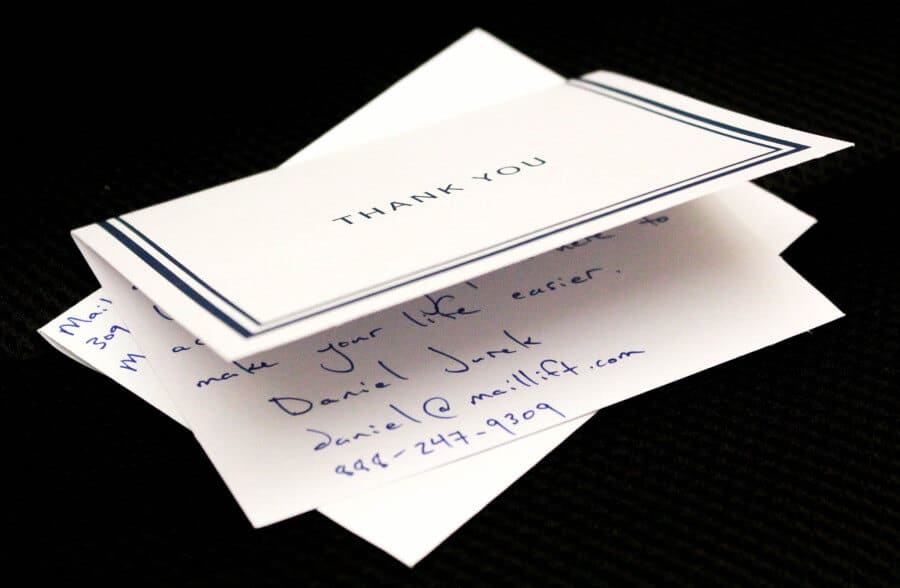
Handwritten thank you card
Making it Special: Paper Choice
Speaking of the medium, when writing a letter, the significance of the message should be reflected in the time and attention put into its creation. This means choosing stationery or card-stock that is of sufficiently high quality. With cards, it’s fairly easy if you buy them pre-made, as the weight of the card will be decided for you, usually in the area of 80lb or 200 gsm (grams per square meter). However, it is still important to select the right color; something that is professional or restrained like cream or beige, rather than bright yellow or neon green.
It’s useful to draw a connection to classic menswear again, and choose a color that would be appropriate to wear on your person. With stationery for letters, the same principle applies, but you are also looking for paper that is smaller than the standard American 8.5″ x 11″, to avoid resemblance with business communications. Select paper that is somewhat heavier and thicker too, which will feel noticeably different than everyday printer paper when held in the hands of the recipient.

Postage stamps can add further personalization and interest to the envelope
Stamps and Seals
An overlooked aspect of making the message appear to be something significant is using a postage stamp, rather than having the letter run through a postal meter. You can select the image on the stamp to suit the occasion (and the reader in some cases), such as a holiday theme. Metered mail looks like business correspondence. For a truly unique touch, you might seal the letter with wax, using a signet ring or a seal made for this purpose along with the appropriate wax stick. After using the regular adhesive on the envelope, melt some of the wax onto the edge of the envelope closure and allow the pooled wax to cool for a few seconds; then press the signet or seal into the wax.
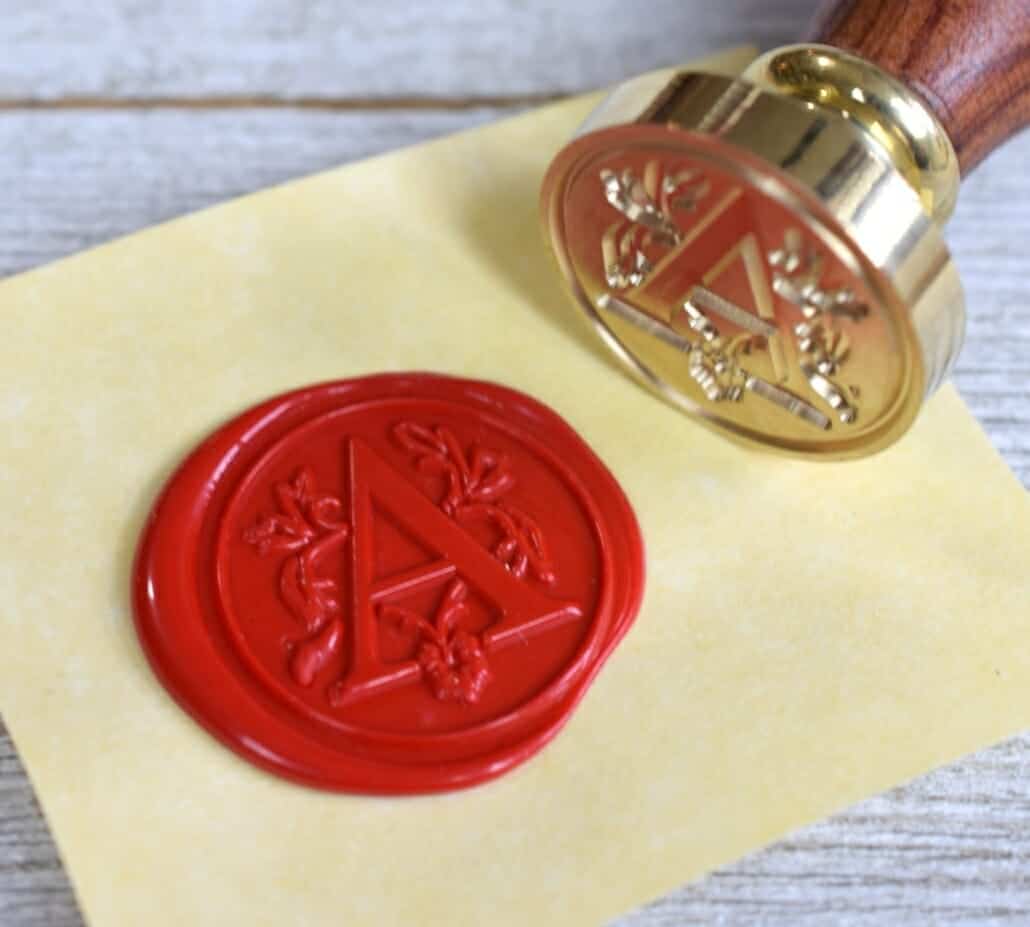
An ornate red wax seal
You can buy peel and stick facsimiles of wax seals, but these are the equivalent of the clip-on bow tie and should be skipped in favor of the real deal. A wax seal adds a touch of elegance or nobility to a letter, though always make sure it is appropriate to the type of communication. For instance, it would be suitable for an invitation or thank you but pretentious or inappropriate in a condolence letter.
Handwrite Your Letters and Cards
Another key aspect of a letter or card that gives it metaphorical weight is its handwritten nature. In our technological society, not only has letter writing become a lost art, but so has writing anything by hand with a pen. So, when something is handwritten, it can be considered special. This includes the letter or card itself, as well as the envelope.
The person who writes the inside missive should be the same one who addresses the envelope. Avoid using a return address label, since its printed nature clashes with the handwritten addressee information in the middle of the envelope. Besides, slapping a label on the outside comes across as a time-saver, which is the opposite of showing care and effort.
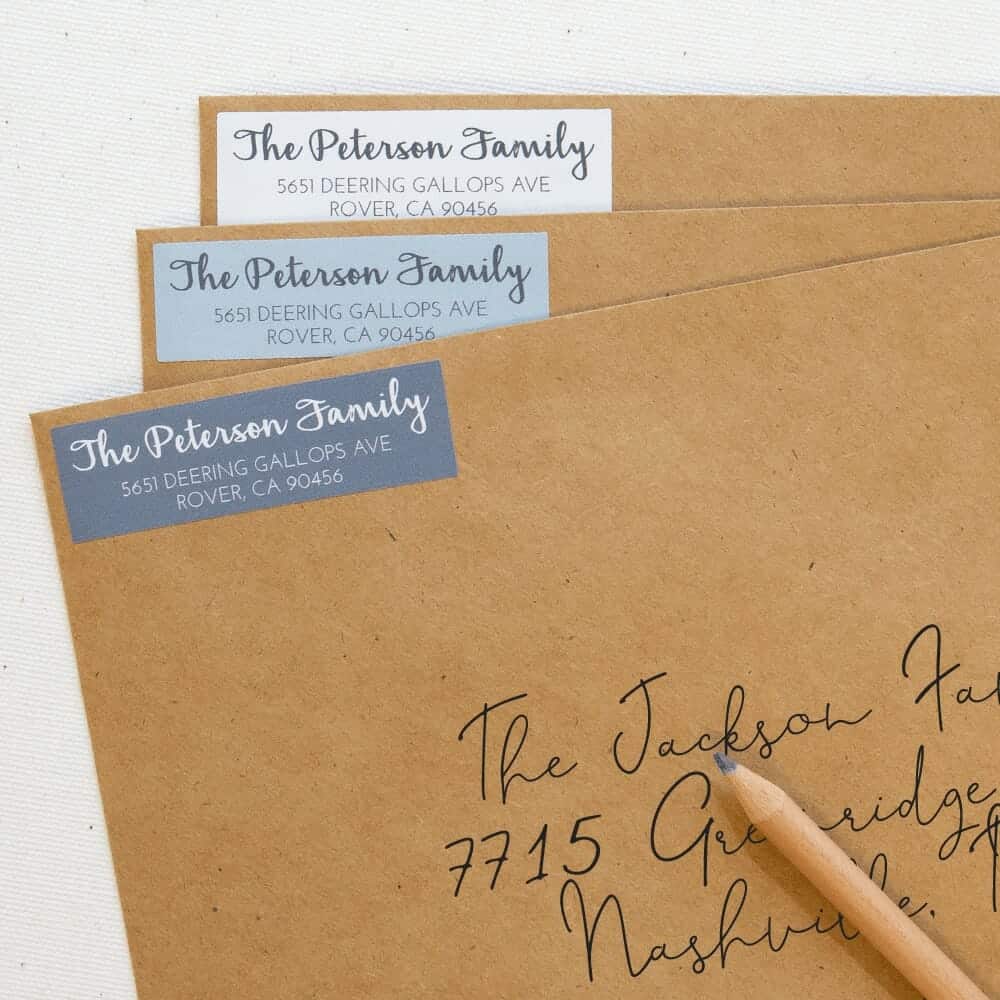
As a rule, avoid return address labels, in favor of matching the handwritten quality of the main addressee information
You don’t need to be a trained calligraphist, but writing clearly and neatly in cursive script, using black or blue ink, is ideal. This is not as easy now as it might have been twenty years ago, as even our grocery lists are typed into phones, so we can be out of practice! Take the time to write slowly and carefully, to ensure your words are easily legible.
Writing with a fountain pen is even better, as the thicker and darker ink will make the letter look more elevated and less ordinary than if it’s written with a ballpoint. Only if your penmanship is utterly abysmal should you type and print out a personal letter or card. If you have to do this, at least sign it personally, as well as write the envelope by hand. Still, in cases where the letter is typed, it can feel like a form letter rather than something individualized.
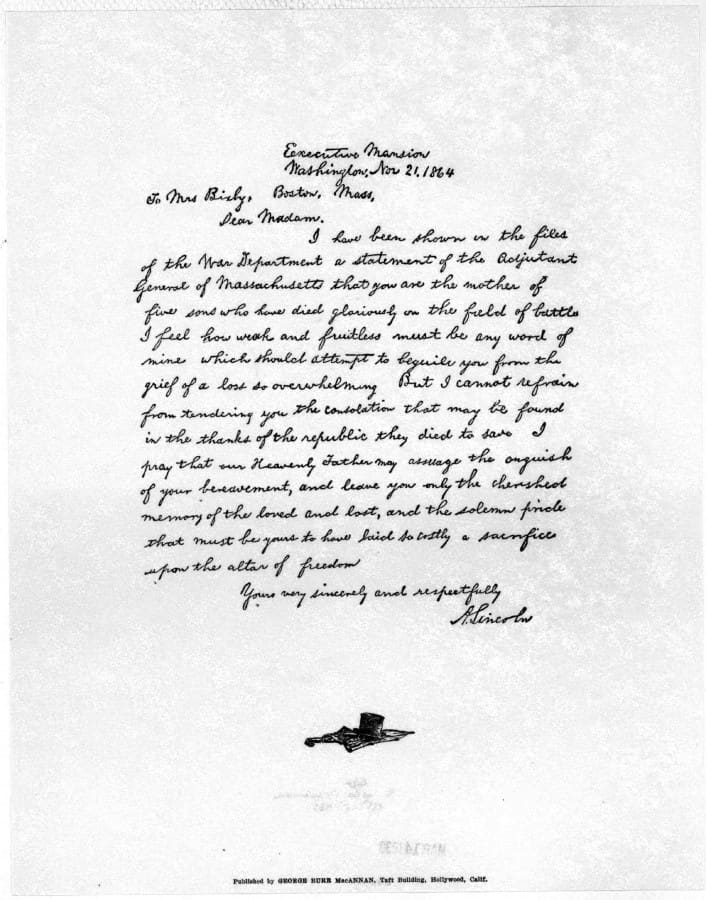
A handwritten letter of condolence
How to Address the Reader
Dale Carnegie, of How to Win Friends and Influence People fame, states that “[a] person’s name is to that person, the sweetest, most important sound in any language.” Therefore, make sure you do not misspell the name of the person you are writing to, as doing so will immediately alienate them. There are a great many established rules related to addressing people by name when sending them letters or cards.
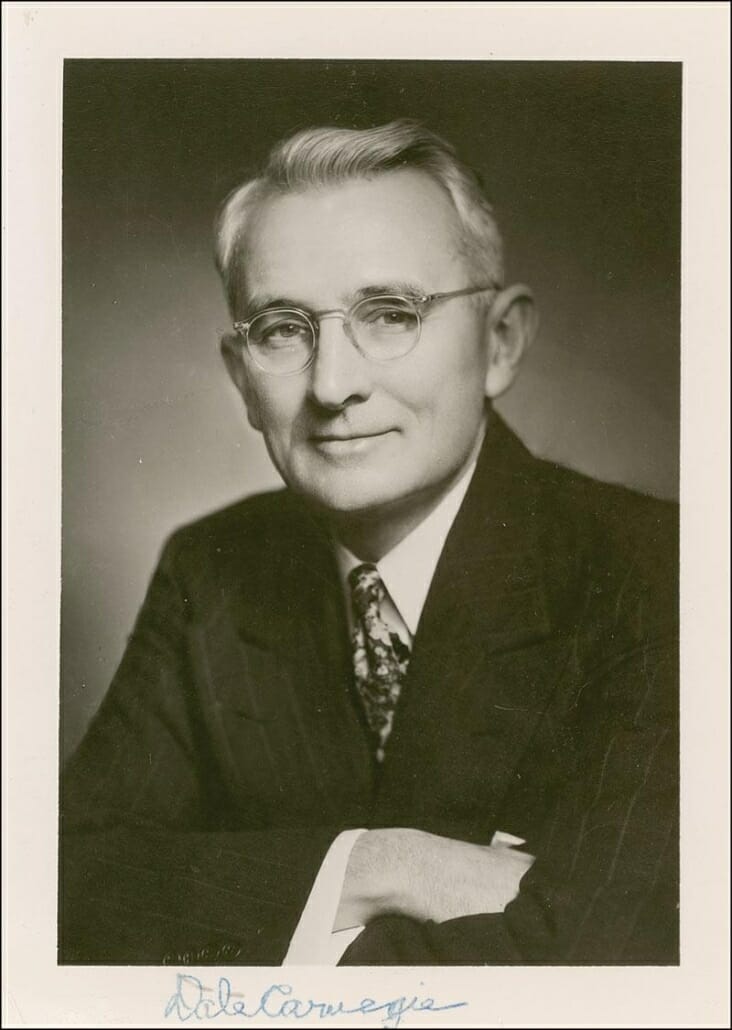
Dale Carnegie knew the importance of using someone’s name properly
Names on the Envelope
As we’ve already said, the same person who writes the card should be the one to address the envelope. Traditionally, the envelope should be addressed using honorifics and last names, as in “Ms. Joan Smith” or “Mr. Sven Raphael Schneider.” If writing to a married woman, use “Mrs.,” but use “Ms.” rather than “Miss” as the modern female equivalent for “Mr.” when writing to a single woman. “Mx.” is often the preferred honorific for gender-noncomforming individuals.
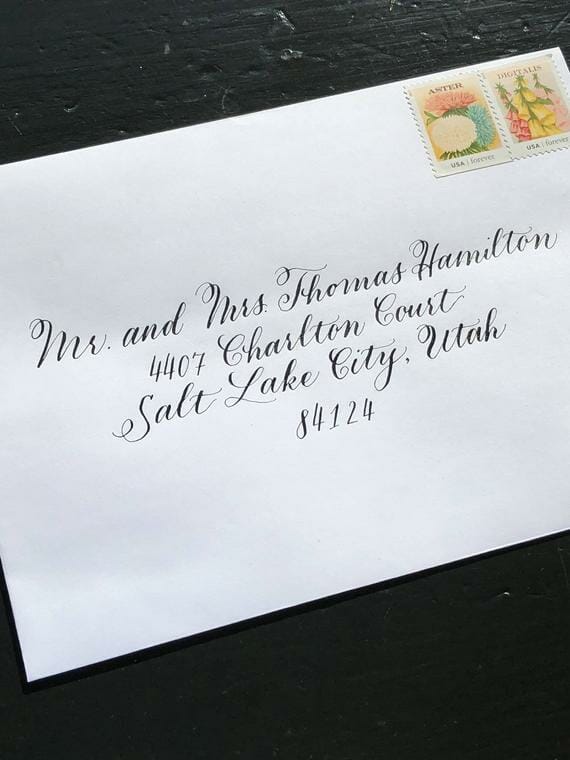
Traditional way of addressing an envelope to a married couple
When writing to a married couple, the traditional form of address used to be putting the man’s name first and erasing the woman’s name (and therefore her individual identity) completely, as in “Mr. and Mrs. Sven Raphael Schneider.” In fact, this is still done in formal communications, especially in Britain. However, in the 21st century, we would suggest at least providing both first names, as in “Mr. Sven Raphael Schneider and Mrs. Teresa Schneider.” Frankly, if you are friends with both individuals, it seems even better nowadays to go with “Raphael and Teresa Schneider” on the envelope.
Another issue that can arise with names is if you are sending a card to a couple, but only know the wife. If I’m sending an invitation to my boss, Joan Smith, and her family but I am not acquainted with her husband, it seems ludicrous to address an envelope with his name ahead of hers. In the past, when women were limited in their public roles, one wouldn’t easily know a wife independently of her husband, but times have (thankfully) changed, and John should not be so insecure that he needs to be first.
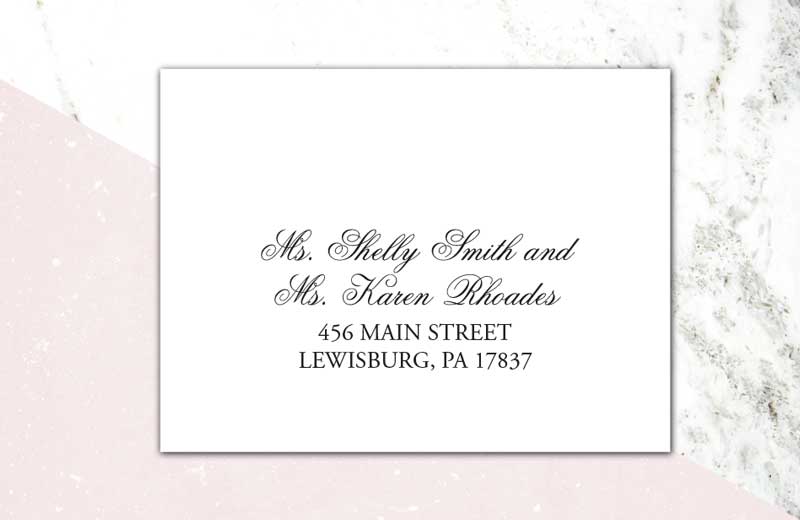
Envelope addressed to a same-sex couple
The rules of letter writing etiquette were also created at a time when only heterosexual relationships were acknowledged, so they need to be adjusted for same-sex relationships. Married couples would be addressed as “Mrs. Jane Smith and Mrs. Joan Smith” if they have the same surname, or “Mr. Tim Jones and Mr. John Smith” if they do not, generally with the names in alphabetical order. For all couples who aren’t married, regardless of gender, put the names on individual lines, using alphabetical order.
Finally here, addressing a coworker with whom you go bowling as “Mr. John Smith” when sending him and his family a Christmas card seems overly formal, and will likely result in jokes. So, you can decide, based on the circumstances and your relationship with the individual, how much formality to retain.
Names in the Card or Letter
All of that was just how to address part of the envelope! For the letter or card itself, you would want to use the standard “Dear” plus the recipient’s name as the greeting. If you aren’t on a first-name basis with the person, use an honorific and surname and then a colon; “Dear Mr. Schlueter:” would be an example. If you and the recipient are well acquainted, you would use the first name followed by a comma; “Dear Preston,” is an example.
Other variations for multiple people could be “Dear Raphael, Teresa, and Preston,” or “Dear Kyle and Family.” At the end of the message comes the final name in the letter–your own. This is called the “complimentary close” or the valediction, and is traditionally made up of “Sincerely,” with your signature below it. For the sake of variety, you can try other wording such as “Cordially,” “Warm Regards,” and “Kind Regards,” or more informally, “Regards” and “Cheers.” Unless you are writing a love letter, avoid excessively sentimental closings like “Yours Faithfully” or “Yours Truly.”
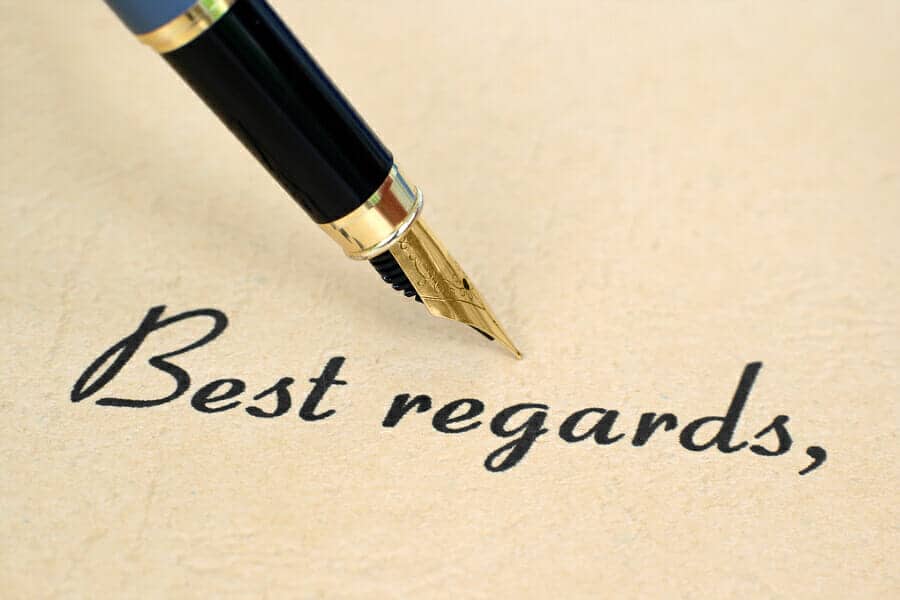
“Best Regards” is a suitable complimentary close
Other Considerations of Etiquette: Tone
When doing any piece of writing, the first two considerations should be audience and purpose. Knowing your audience and the reason for writing helps determine the proper tone, among other things. So, for an expression of sympathy, you wouldn’t want to choose a jokey card or include a lot of levity if sending a letter. Similarly, if you’re thanking an important person for a favor, it’s likely best to maintain a respectful tenor. However, it is also essential to be sincere and authentic, so your tone won’t come across as being false.
If you’re normally not religious, for example, then don’t take this approach in your message. With this in mind, it is also almost always better to purchase quality blank cards rather than getting a pre-written sentiment. Not only might it not be true to you, but it is less meaningful than taking the time to put your own thoughts and feelings into writing.
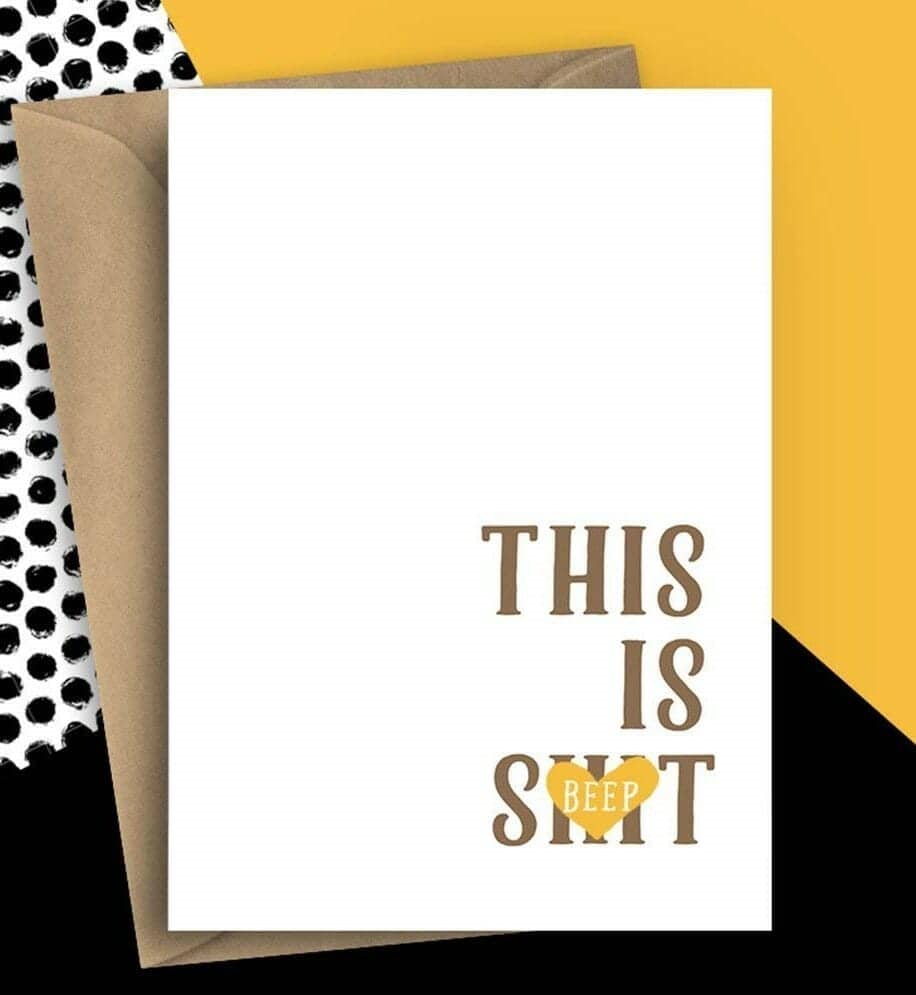
Probably not the best choice to send to a grieving person
The Timing of Written Messages
As significant as what you write and the “how-to” aspect is the “when;” timeliness is equally important. A thank-you letter or card should be sent as quickly as possible after the event or action you are writing about. Considering that US mail can take up to three days or even a week to arrive, it’s a good idea to send your thanks within 24 hours. Congratulations and get-well cards should also happen quickly.
While it would obviously be great to have an ill person get well in a jiffy, it would be strange to have your well wishes received after they’ve recovered. To avoid having cards arrive after a birthday or holiday, a two-week buffer is recommended, especially if people are likely to display the card on their desk or mantle. Christmas and New Year’s greetings are usually sent during the first week of December for these reasons. The specific situation of offering condolences requires you to do so within two weeks of the loss.
Orienting the Paper
A final but not-insignificant consideration is how to arrange the papers of a letter in the envelope, or how to orient a card. First, if your letter is multiple pages in length, the recommended practice is not to staple or clip them. Whether to write on both sides of a sheet of paper is open to debate, though it’s probably best not to. Doing so saves mailing weight and paper, so could make you seem like a cheapskate, while also making the document look “crowded.” This can also lead to bleed-through of the ink, making reading difficult and the document look sloppy.
Since you shouldn’t be writing a novel, two pages at a maximum should fit readily into the envelope with writing only on the front of each sheet. Fold the paper evenly in thirds or halves (depending on the shape of the paper and envelope), with the writing hidden on the inside of the fold–another reason to write only on one side.

Ink can bleed through when writing on both sides of a sheet (left)
Where cards are concerned, the approach is different. First, refrain from writing on the reverse of the front cover. If the message is longer than the space allows, continue onto the back of the card (though there is much to be said for the ability to be concise). If the card is oriented horizontally, position the opening at the bottom of the envelope and the front of the card facing the envelope flap. That way, when someone opens the envelope, the card front will be facing them and they can pull it straight out and read without flipping it around.
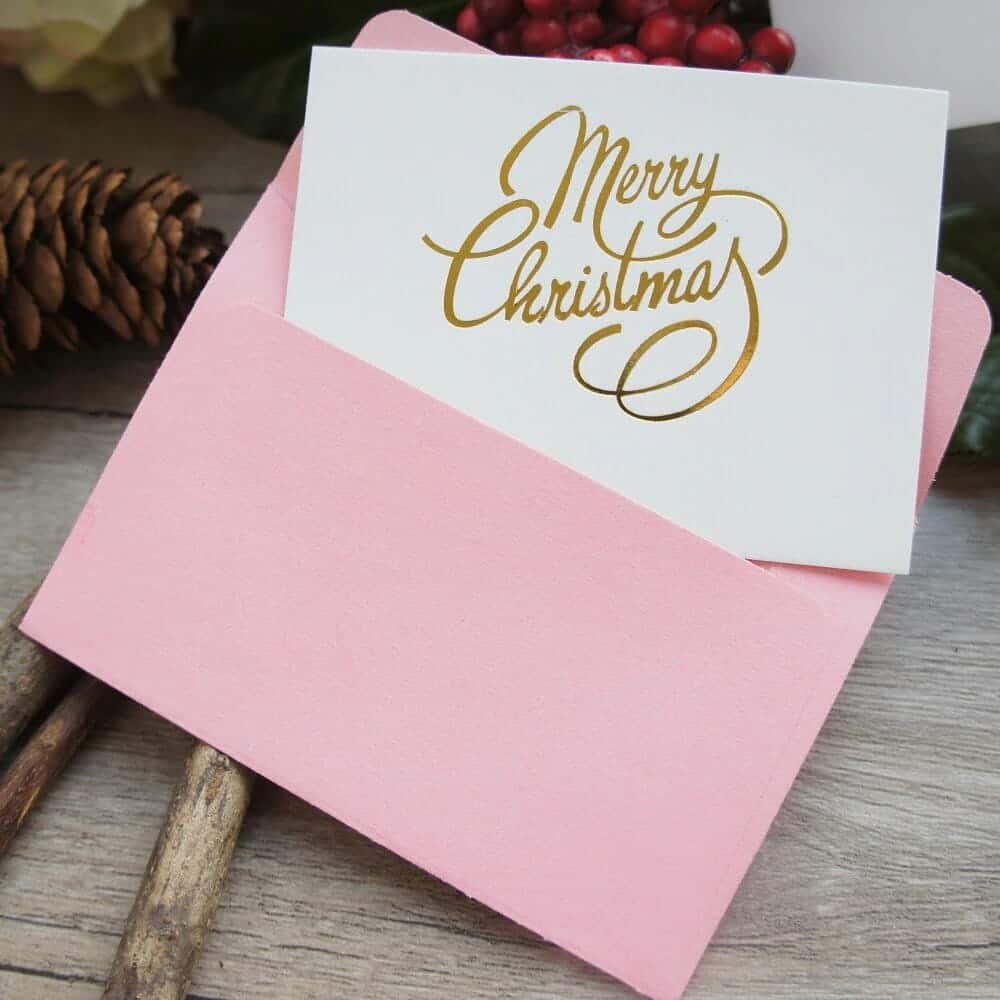
The proper orientation of a horizontal card
For a vertical card, arrange the open side of the card so it faces the top of the envelope, again with the front facing the flap. When a right-handed person pulls out the card, he or she will be able to open and read it without turning it about. If you know for a fact that your recipient is a lefty, then orient a vertical card so the opening is in the bottom of the envelope.
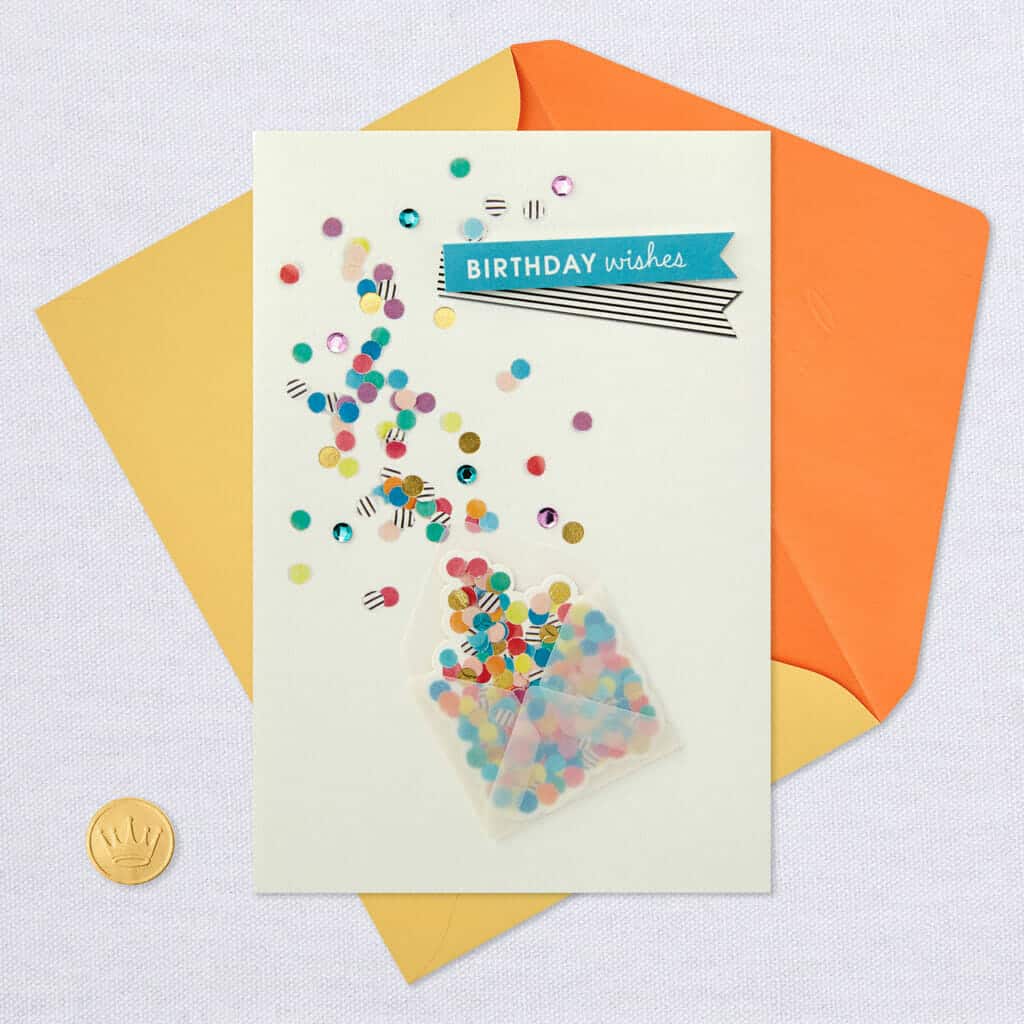
The proper orientation of a vertical card
Conclusion
There are myriad rules related to naming conventions alone when sending a card or letter, not to mention other specifics of the process, so you may need to consult a larger manual, but we hope we’ve touched on the most common situations here. Letter writing may be a dying art, but it doesn’t have to stay that way. In the era of “fast casual,” “slow and formal” carries extra meaning–all the more reason to revive aspects of handwritten personal communication.
Do you write letters and send handwritten cards? What has been your experience? Share in the comments section below.
from Gentleman's Gazette https://ift.tt/2Qgyfoq
- Get link
- X
- Other Apps
Comments
Post a Comment
thanks for your feedback